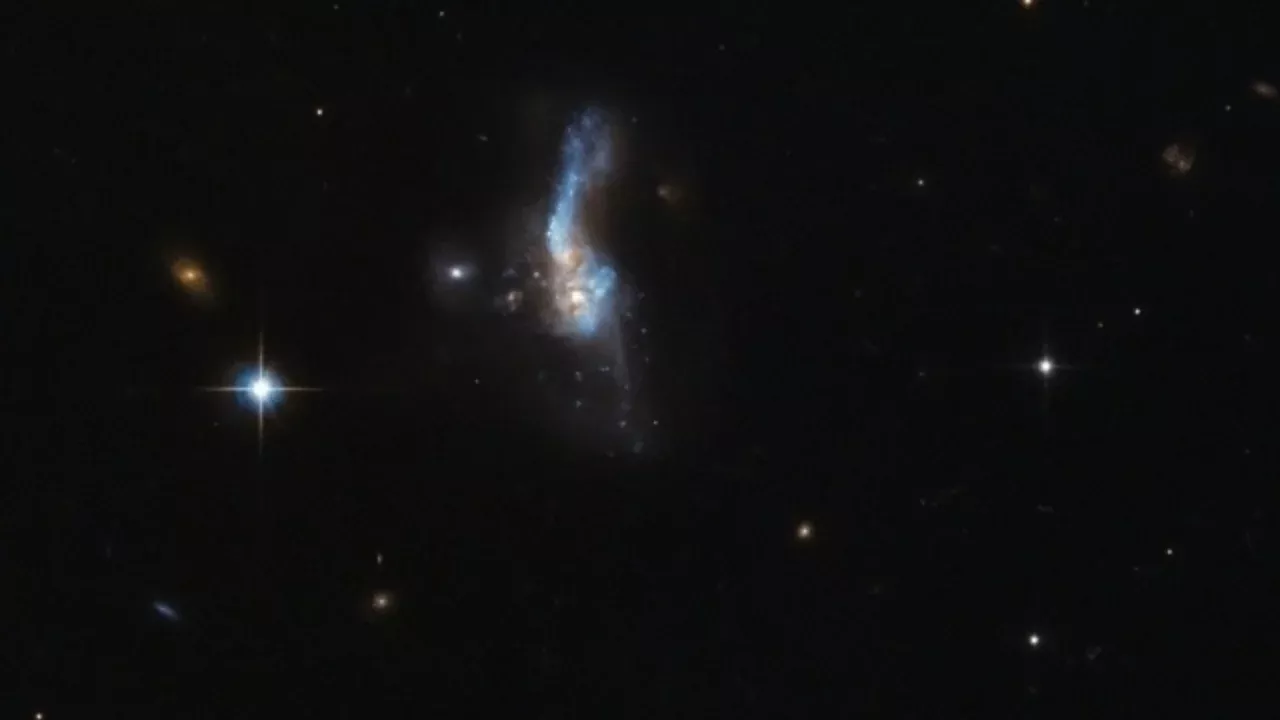
An important discovery has been made for the cosmic scientific community. This was reported by Zamin.uz.
An international group of astronomers, using the ALMA telescope operating in the Atacama millimeter and submillimeter wavelength range, identified a new, massive infrared galaxy near the famous quasar called “Cloverleaf.” This was reported by the journal “Monthly Notices of the Royal Astronomical Society.”
It is known that the discovered galaxy emits light a trillion times brighter than the Sun. Such galaxies are known among astronomers as ULIRGs (ultra-luminous infrared galaxies).
They create new stars equivalent to 100 to 1000 solar masses per year during the star formation process. According to scientists, these galaxies help to deeply understand the process of star formation and evolution in the universe.
The “Cloverleaf” quasar named H1413+117 appears fourfold due to gravitational lensing and is a powerful energy source. A group led by Japanese researcher Natsuki Hayatsu discovered this hidden new galaxy behind the quasar during observations conducted with ALMA.
This galaxy is not visible in optical light because it is completely covered by a layer of dust, but it is clearly observed in submillimeter wavelengths. Detecting such hidden objects through ground-based telescopes is difficult because dust absorbs their light.
The new galaxy is located approximately 6 arcseconds away from “Cloverleaf,” with a redshift of 3.39. Researchers estimate the molecular mass of the galaxy to be between 40 and 230 billion solar masses.
The mass of the black hole is about 0.1 billion solar masses. With an infrared luminosity exceeding 2.8 trillion times that of the Sun, the energetic activity of this galaxy is so high that astronomers call it a “starburst phase.”
According to researchers, this ULIRG is not yet in a stable state. It is forming as a result of the collision of two large galaxies rich in molecular gas.
This suggests that it may become an active nuclear galaxy in the future and later develop into an elliptical structure. Astronomers are planning new observations to study the molecular composition and internal dynamics of the galaxy in more detail.
At the same time, it was recently reported that scientists from Amsterdam University discovered a new planet named TOI-2431 b with the help of NASA’s TESS telescope. These discoveries once again confirm that many mysteries of the universe remain unexplored.







